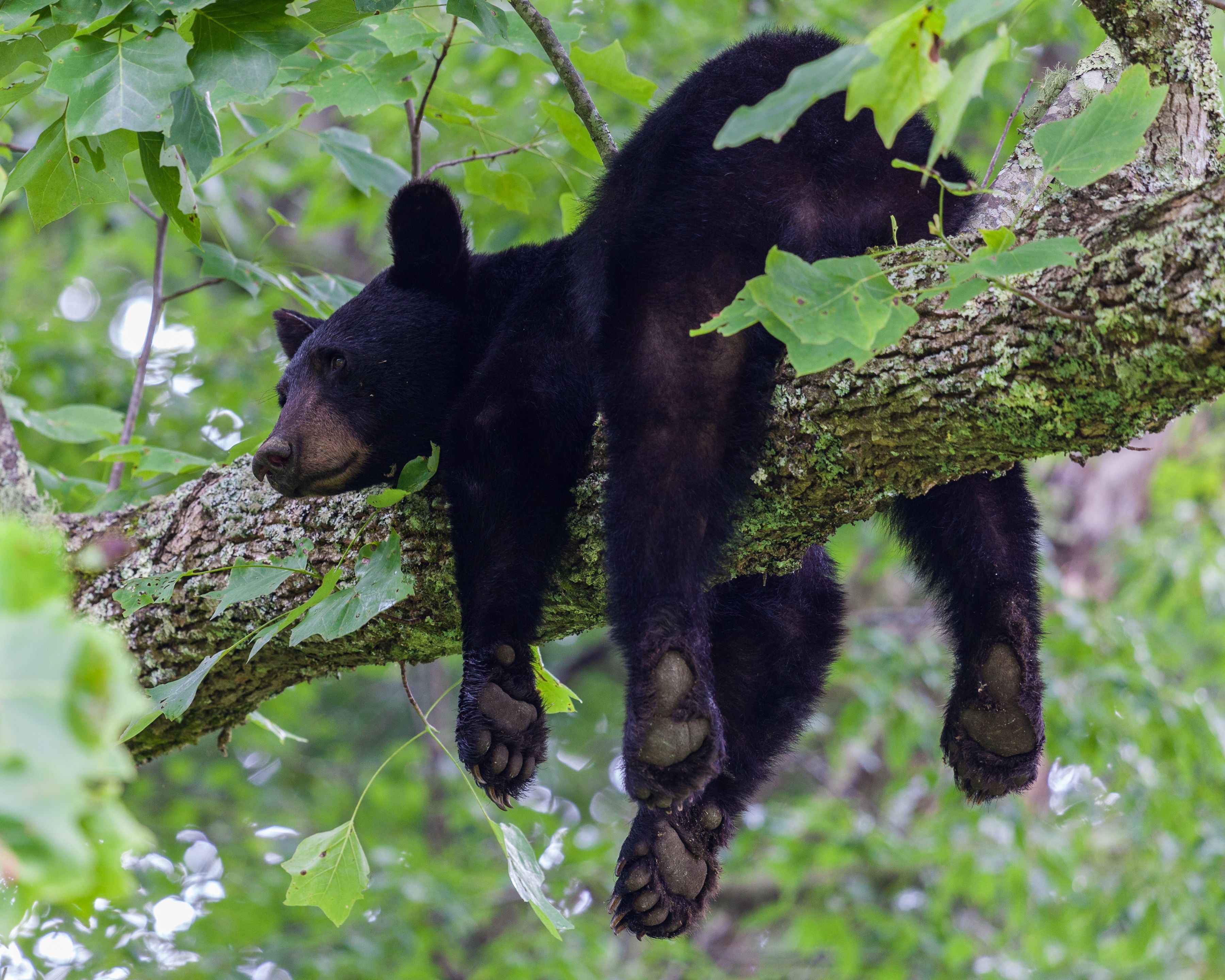
Bears are large omnivores in the Ursidae family. Bears are distinguished from other carnivores by their size, stout body shape, round ears, long snout, and short tail. While fur color is generally black in the Great Lakes region, other color phases including brown, white, blue, and cinnamon are possible.
Measurements from Minnesota are from Hazard (1982), from Wisconsin are from Jackson (1961), and from the Eastern United States are from Hamilton and Whitaker (1998).
Total length ranged from 53.9” to 70.9” (137-180 cm) in Wisconsin, and tail length ranged from 3.5” to 4.9” (9-12.5 cm) in Wisconsin.
Average adult body weight ranged from 250 to 300 lb (113-136 kg) in Minnesota, and 200 to 300 lb (91-136 kg) in the Eastern United States. Female body weight ranged from 225 to 450 lb (102-204 kg) in Wisconsin, while male body weight ranged from 250 to 500 lb (113-227 kg) in Wisconsin.
Males are typically larger than females.
Bears are found in less settled, forested regions of the United States and Canada. Bear populations have been extirpated or diminished in many accessible locations in the Midwest and East (Reynolds and Tapper, 1996; Scheick and McCown, 2014). Populations are secure in Ontario, Michigan, Wisconsin, and Minnesota, critically imperiled in South Dakota, and are presumed extirpated from North Dakota and Iowa.

Worldwide, Ursus americanus is restricted to North America. Other Ursus species occur throughout North America, South America, Europe and Asia.
Bears have an IUCN rank of Least Concern, IUCN information.
